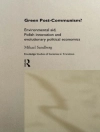Increasingly, people are turning to the ballot box to decide questions of land use policy in many parts of the United States. Have the citizens lost faith in the decisions of their elected officials? Are they turning to the ballot box as a last resort or do they simply want to participate more in deciding matters that will impact their lives? In this timely volume, Roger Caves discusses how direct democracy has evolved in the United States, the reasons for its use in a land use planning context, and some of the legal issues surrounding its use. The topic of ballot box planning has never been treated in such detail as Caves does in this original examination. Case studies of Barnstable County, Massachusetts; Portland, Maine; San Diego, California; and Seattle, Washington illustrate both successful and unsuccessful ballot measures concerned with land use issues. Political, socio-economic, and environmental concerns are profiled throughout the case studies. Professionals and students in public policy, American politics, urban studies, and planning will enjoy this insightful volume. ‘I found Cave′s book an especially welcome contribution because it fills a significant gap in the literature on the relationship between direct democracy and growth management. It is the only book that I know of on the subject.’ —Journal of Planning Education and Research USED AS A WHOLE, THIS QUOTE IS REDUNDANT/CUT WHEN USING ‘Roger Caves′ work describes the efforts of citizens to use direct democracy in growth management efforts. . . . The book is unique in both its focus on local, substate use of this tool, and in its analysis of the direct democracy movement as it applies to the regulatory processes of local government. . . . the book specifically addresses the issues and techniques used in the direct democracy movement as applied to growth management and land use. Organized in a progressive manner from general to specific, the book′s structure enhances its usefulness. . . . highly readable. . . . It does aid in understanding the processes and tools of direct democracy and their applications in modern society. Further, the author puts to rest some of the myths surrounding the concept of voter activism.’ —APA Journal
Содержание
Preface
Direct Democracy and Its Place in Democratic Theory
Ballot Box Planning in the United States
Legal Considerations in Ballot Box Planning
Barnstable County, Massachusetts
Managing Growth at the Regional Level
Portland, Maine
Preserving the Working Waterfront
San Diego, California
Preventing the Los Angelization of San Diego
Seattle, Washington
Capping Downtown Growth
Conclusions












